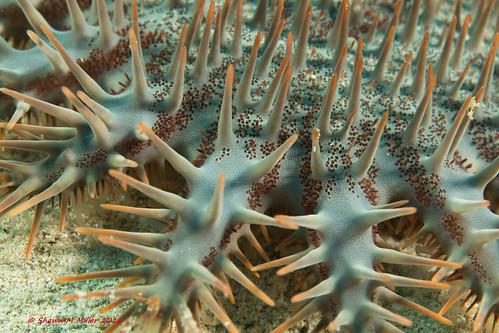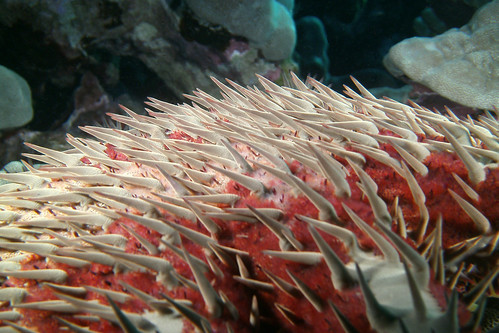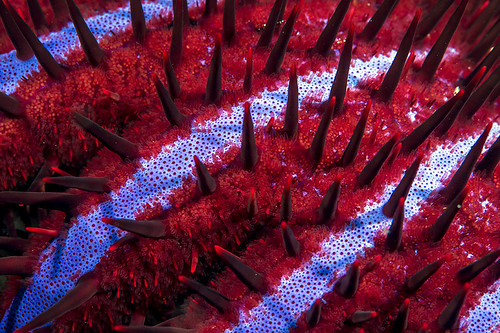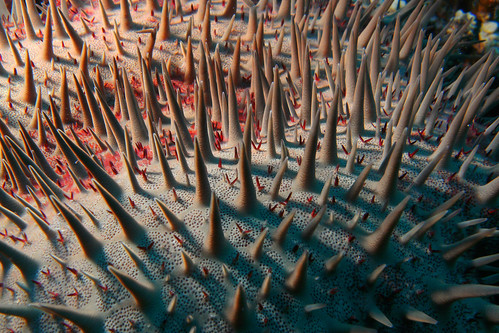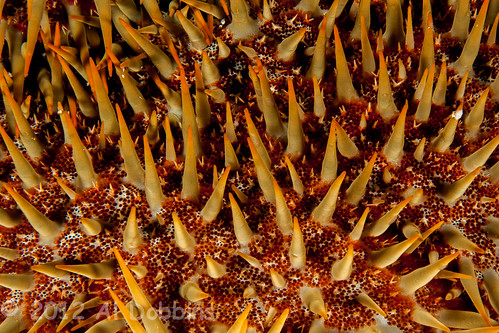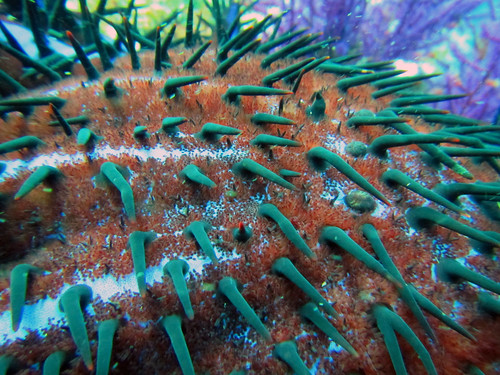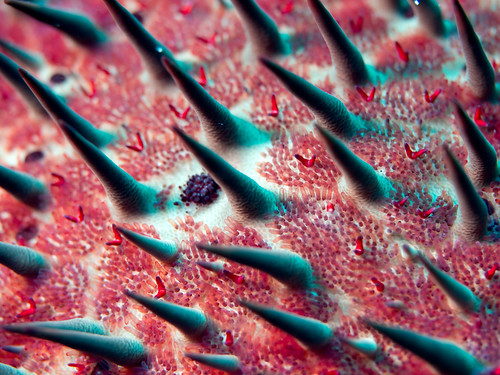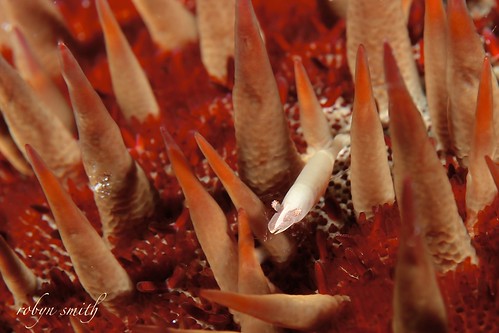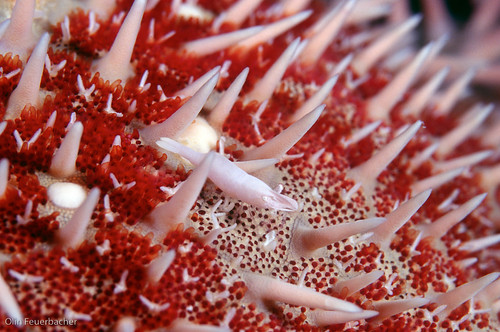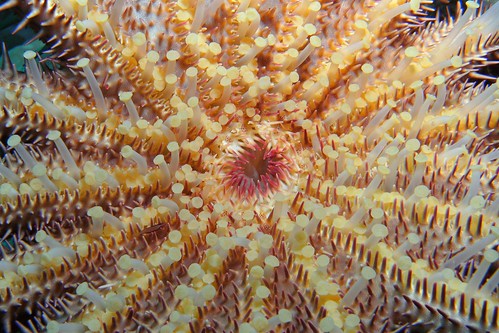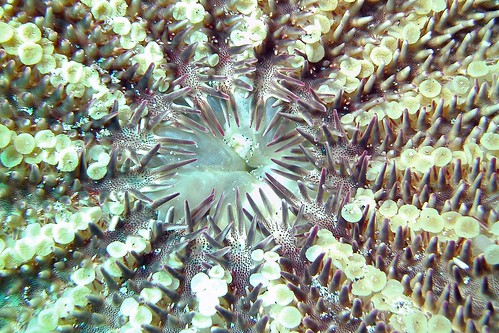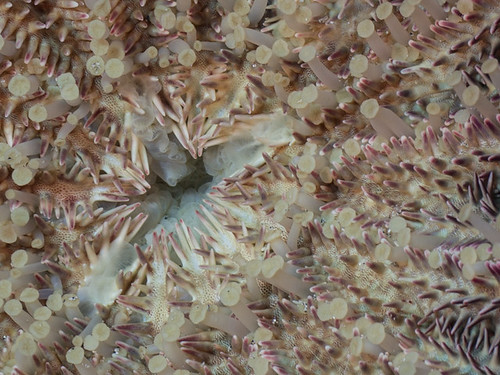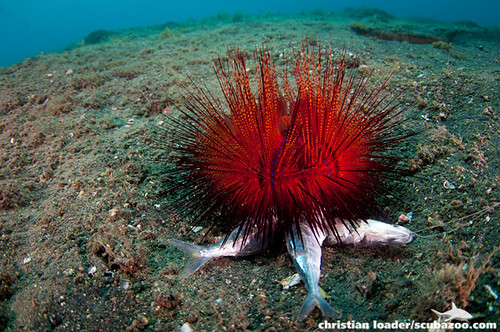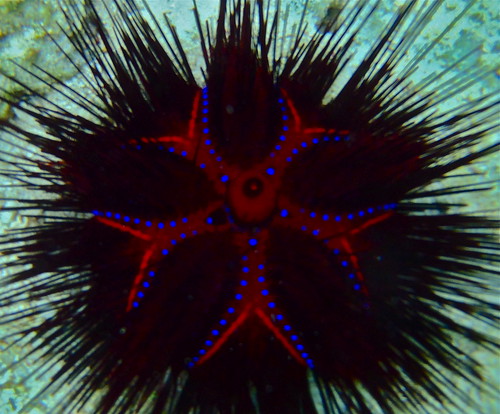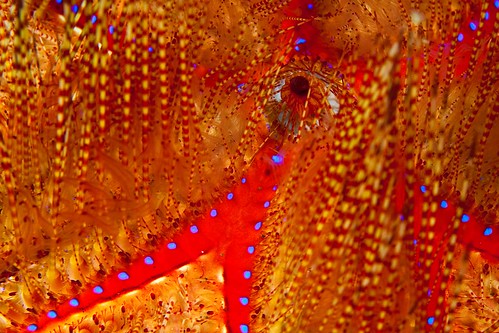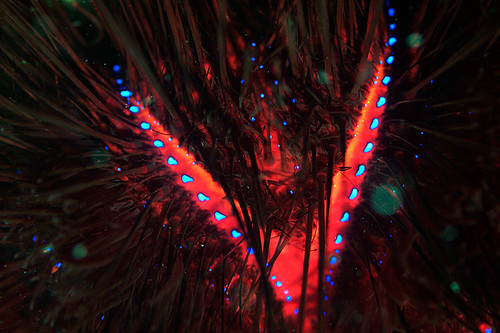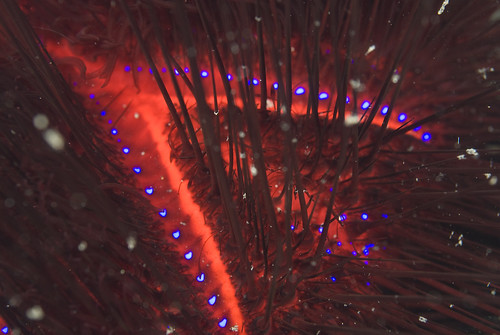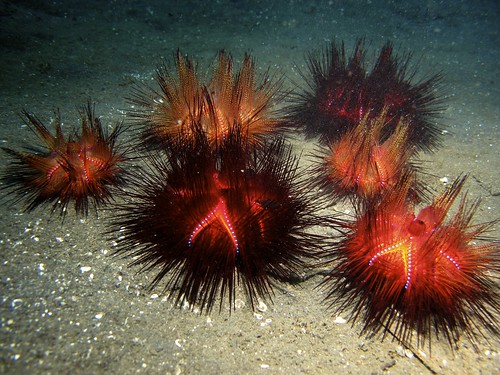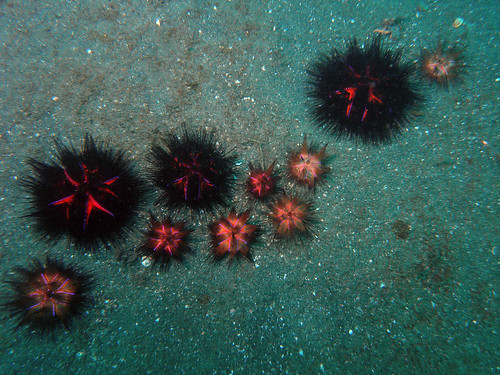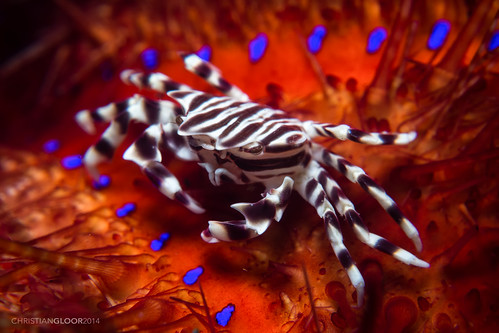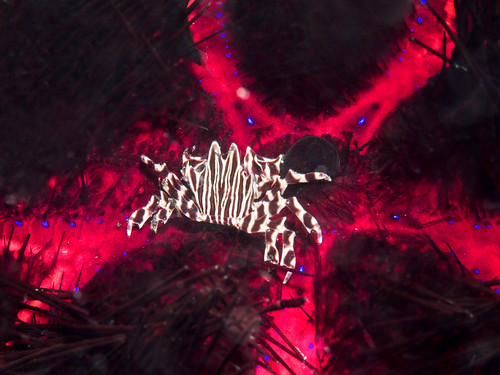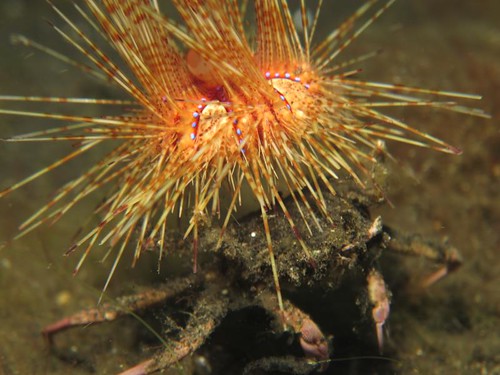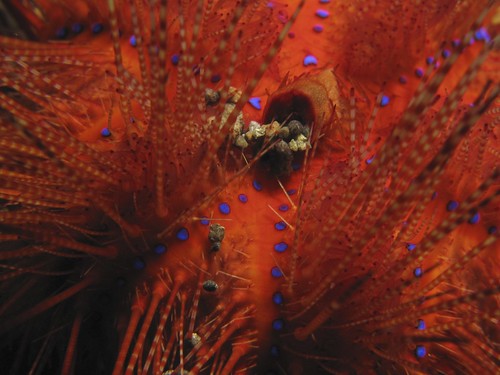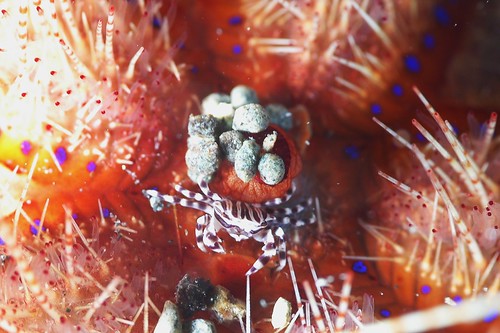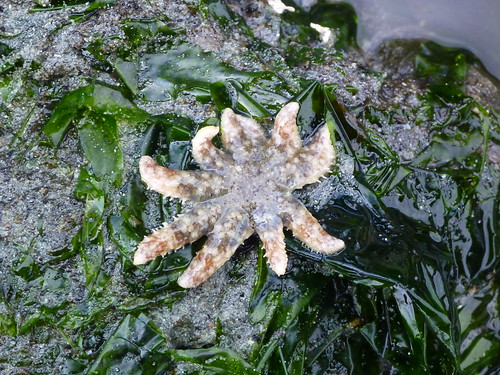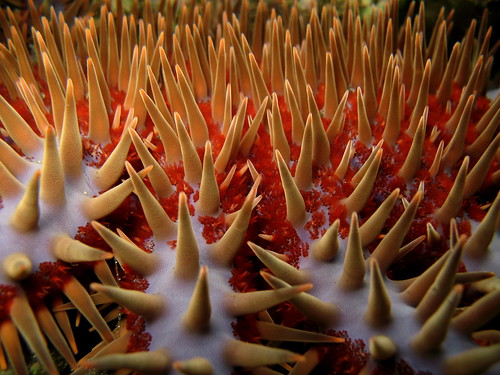
Today as I was scrolling through the many years of posts I realized that I have NEVER written about the Crown of Thorns starfish, Acanthaster planci! If you don't live in the Indo-Pacific you might not realize that this is actually one of the most heavily studied starfish in the world! There are whole BOOKS written just about the biology and ecology of this single starfish species!
Why? What makes this species so important?
This starfish is a voracious coral predator! It just extends its stomach onto the fleshy tissue of a "hard coral" (i.e. scleractinian) and a little while later, only the "cleaned" skeleton of the coral remains!
If it was a reasonable number of these animals feeding on coral, it would actually be healthy for the ecosystem. Predators control community structure and are important to ecosystem function..
The thing is though that this species, for reasons which have been studied since the 1960s, have undergone sporadic and localized HUGE population explosions! Their incredible abundance results in the wholesale LOSS of complete coral reefs!

As you can see, they feed in aggregations and devour MASSIVE amounts of coral! I wrote a little bit about these many, MANY years ago for "Coral Day" wherein I posted that they can devour SIX square METERS of coral a year!
They have become especially infamous in the Great Barrier Reef and to many Australians who have become accustomed to physically destroying them on contact. They actually have developed ROBOTS to seek them out and destroy them..
So, unlike most starfish, they aren't very popular....
The Beauty of the Beast...
Image from Wikipedia, taken by Jon Hanson, in Thailand: https://en.wikipedia.org/wiki/Crown-of-thorns_starfish#/media/File:Crown_of_Thorns-jonhanson.jpg
|
So, today, I thought I would exploit the wonderous world of Flickr and show off some of these spectacular macro shots displaying the surreal surface of these animals...
The crown of thorns occurs across a WIDE range. From Baja California to Hawaii and Japan and then down to the east coast of Africa in the Indian Ocean. The range of colors is similarly vast! Its not entirely clear if these might represent separate species or perhaps represent some other kind of variation based on the environment. Perhaps food? growth? Difficult to say...
But genetics DOES indicate that there are multiple "cryptic species" across this animal's wide range in the Indo-Pacific..
But genetics DOES indicate that there are multiple "cryptic species" across this animal's wide range in the Indo-Pacific..
The big thorny bits are of course, the spines.. the dark dots on the surface are the papulae (or gills) and if you see little white or dark beak like structures, those are called pedicellariae whose function in these animals is not entirely clear... But likely some kind of "in close" defense against parasites or what have you....

and the ANUS of course! That's the dark spot, probably surrounded by spines... this shot is nice because it not only shows off the papulae (the gills) but also the pedicellariae (the red tweezer like structures)
As one finds often time in nature.. you have some big animal with lots of complex surface textures.. so are there animals to take advantage of it! Shrimps often live closely and among the spines on the animals' surface...
here are tiny shrimps.. some in the genus Periclimenes...
And the ORAL surface!
Strangely enough, the top surface of Acanthaster is remarkably well known but how many people have actually seen the ORAL surface where the mouth is???
In addition to the tube feet all converging at the mouth, you also see the oral spines projecting into the mouth itself!

And a video to top it all off!
At some point, there will be much, much MORE about the Crown of Thorns!


